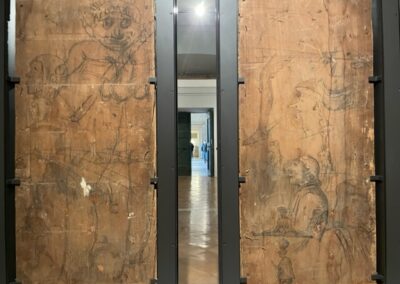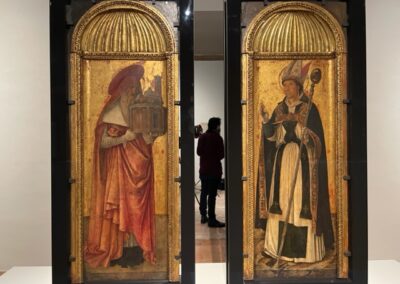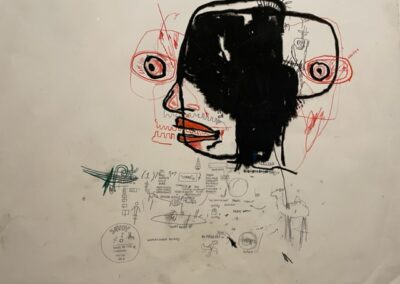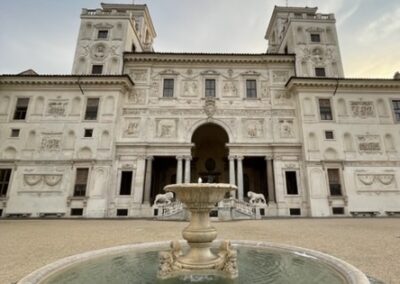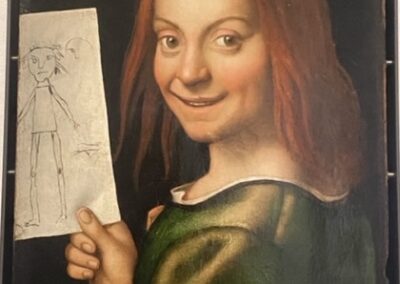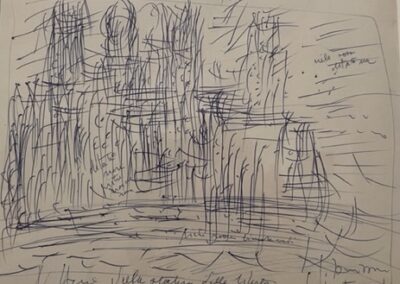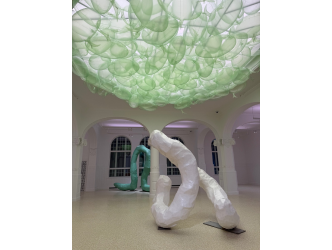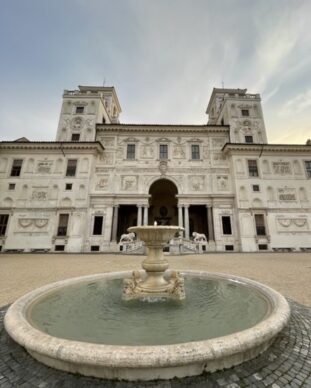
Suspending their attention
The subject may seem trivial, but it is both unprecedented and fascinating how when the artist suspends their attention for a moment and their hand continues to work alone, it produces something unique.
Gribouillis
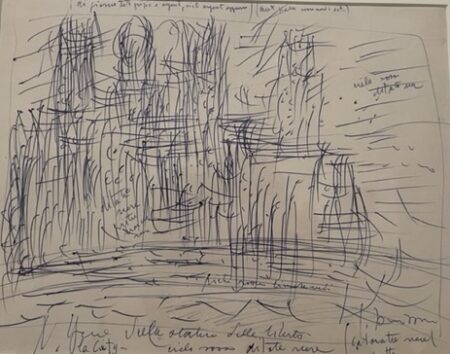
Lucio Fontana
The French speak disdainfully of the “gribouillis” whereas the English distinguish the “scribble”, the crossings-out similar to writing, from the “doodle”, the colloquial term for the kind of absentminded drawing one does while talking on the telephone. It has taken the arrival of the 21st century for this subject, in which the unconscious plays a major part, to be seriously addressed. Until 22 May the Villa Medici in Rome is tackling the theme of the great art of scribbling, followed by the Ecole des Beaux-Arts in Paris in October.
150 works
A theme spanning the whole of history, from the Renaissance to Cy Twombly, in 150 works. This is an exhibition of the kind we would expect from the French Academy in Rome.
Alberti and Bodart
The two curators, historians Francesca Alberti (Académie de France à Rome) and Diane H. Bodart (Columbia University), see in this practice an expression of the “artistic margins”. “The hand is liberated from habitual control, from the obligation of virtuosity.”
Michelangelo, Leonardo
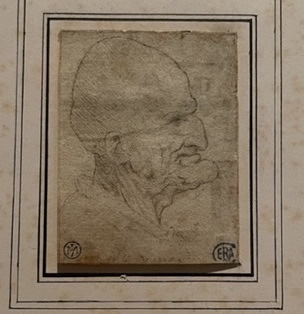
Leonardo da Vinci
In the pantheon of scribbles and doodles we find those of Michelangelo, who produced mechanical graphic notes but also a number of caricatures including of himself, making fun of his work on the Sistine Chapel. He deployed himself on paper in every sense. Like the musician practicing scales, the painter moves their hand in a free exercise, repetitive but explorative. In doing so Leonardo was searching frenetically, as we learn in the exhibition catalogue from the pen of the art historian Angela Cerasuolo: “this abandonment between consciousness and the absence of self where images suddenly come to mind, it is suggested to allow them to flow onto the paper without stopping, without worrying that ‘the slightest mark in charcoal should be definitive’.”

Michelangelo
Rembrandt
Titian launched himself indiscriminately at the paper with a study of religious figures alongside a drawing of a leg. And Rembrandt includes his own self-portrait not far from the heads of old men… Scribbles and doodles tells the story of the underside of the official historical narrative.
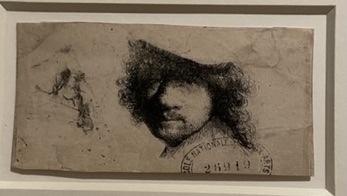
Rembrandt
Bellini
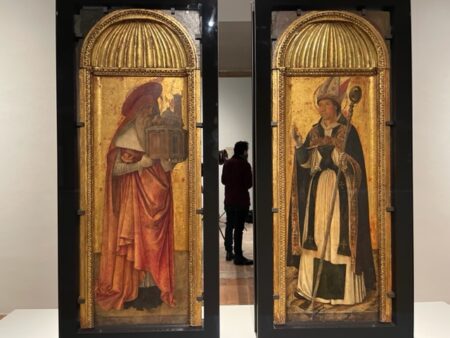
Giovanni Bellini
We discover in this exhibition that when Giovanni Bellini (1430-1516) and his workshop were painting religious panels depicting the learned Saint Jerome and Saint Louis, on the back they seemed to take revenge with drawings depicting grotesque and ridiculous figures.
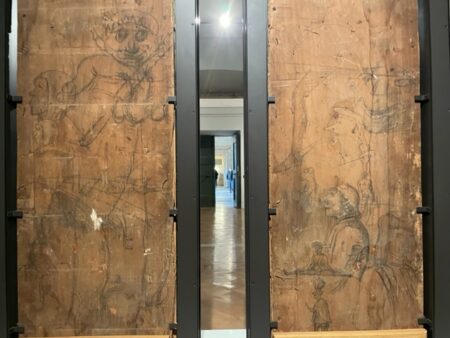
Giovanni Bellini
Francesco Caroto
The most astonishing picture in the show is by a Veronese painter, Giovanni Francesco Caroto (1480-1555) who uses as his hero a redhaired toddler with an impish look, showing off his scribbles. Or how the incarnation of the clumsiest drawing there steals the spotlight.
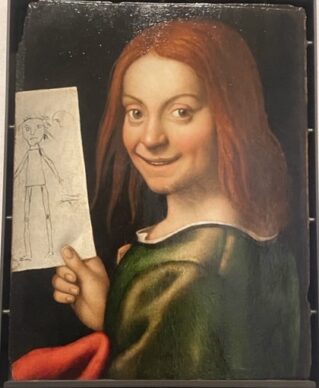
Giovanni Francesco Caroto
Michaux
Evidently Surrealism reveres the unconscious inherent in the artist’s pencil and its theoretician, André Breton, revisited art history through this prism. The Belgian writer and painter Henri Michaux (1899-1984), who wrote “an entire life is not enough to unlearn”, found in 1955, in mescaline, a sympathetic companion for a truly hallucinated body of work, liberated from what we have been taught.
Sol Lewitt
We could also think about the deliberate scribbles of Sol LeWitt in 2005 in a Wall Drawing or the doodles of architect Frank Gehry, which were later printed in the form of rugs.
Basquiat, Twombly
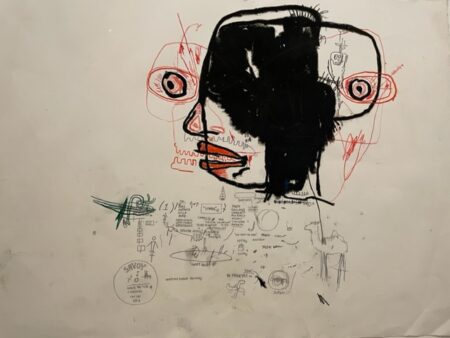
Jean Michel Basquiat
But it’s with two contemporaries that the practice reached its paroxysm. Like an exercise in free jazz, Jean-Michel Basquiat (1960-1988) played with caricature, ungainliness, and barely legible writing in his chaotic and urban compositions (See here the report about Basquiat at Fondation Vuitton). Whilst Cy Twombly (1928-2011) attempted with what resembles crossings-out to push this letting go and unlearning to the limit, while playing with the paper’s empty space. The latter claims to have made some of his early drawings while he was in the army, in the dark (See here the report about Twombly retrospective at Centre Pompidou).
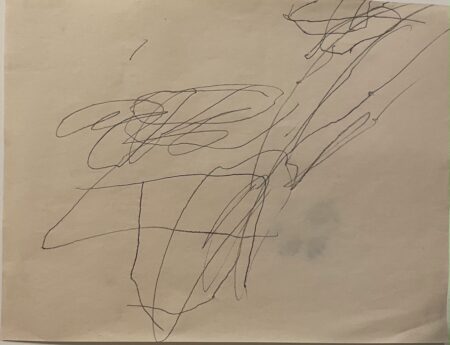
Cy Twombly
Roland Barthes
Roland Barthes saw in this blind artistic practice a sexual act: “it’s as if the only thing left after the strongly erotic act of writing were the languid fatigue of love: a garment cast aside into a corner of the page”. The random marks in Twombly’s gestures effectively occupy a corner of barely scrawled page. Subtle beauty is not always to be found where you expect it.
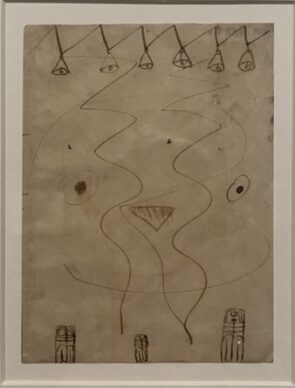
Constantin Brancusi
(1) Roland Barthes, Cy Twombly. Deux textes. Seuil.
Until 22 May. Villa Medici. Rome.
Support independent news on art.
Your contribution : Make a monthly commitment to support JB Reports or a one off contribution as and when you feel like it. Choose the option that suits you best.
Need to cancel a recurring donation? Please go here.
The donation is considered to be a subscription for a fee set by the donor and for a duration also set by the donor.

